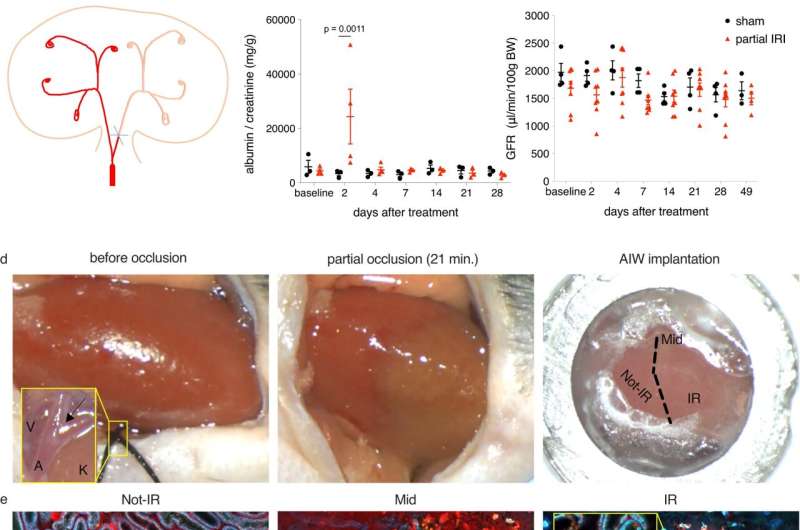This article has been reviewed according to Science X's editorial process and policies. Editors have highlighted the following attributes while ensuring the content's credibility:
fact-checked
peer-reviewed publication
trusted source
proofread
New research: Acute kidney damage spreads over time

When our kidneys are acutely damaged, it can cause necrotic injury, which is the death of cells in the kidney. A new study from Aarhus University has now found that the cell damage spreads over several days after the immediate injury, affecting a larger area of the kidneys.
Assistant Professor at the Department of Biomedicine, Ina Maria Schiessl, who is one of the researchers behind the study, which has recently been published in Nature Communications, explains, "Our study confirms that acute kidney injury, after temporary interruption of organ blood supply, causes significant necrotic injury in the kidneys. However, by repeatedly imaging the same areas of the kidney over a time course of several weeks in living mice, we now show that there is significant injury propagation into previously uninjured areas of the kidney, causing structural damage in those areas."
And these findings are significant for how we treat patients, she explains. "Our data document pronounced spread of the initial injury over the first few days after acute kidney injury. This suggests a previously unknown time window for intervention measures to limit further injury and disease progression in the kidneys."
Can cause permanent kidney damage
Acute kidney injury is a risk factor for chronic kidney disease. In fact, patients with acute kidney injury have an up to 8-times higher risk of developing chronic kidney disease later, even if they initially experience full functional recovery. Chronic kidney disease affects more than 10% of the world's population and causes a significant burden on respective patients and health care systems. There is no cure for chronic kidney disease and over time the disease may progress into end stage renal failure, leaving patients with only two options: dialysis and kidney transplantation.
Researchers have yet to fully understand the transition from acute kidney injury to chronic kidney disease, and as a result, there are no established intervention measures to halt the progression into chronic kidney disease. But Schiessl hopes that this study may bring researchers a step closer to understanding how our kidneys are affected when subjected to acute injuries and what role that may play in the development of chronic disease.
"Our study documented a link between the accumulation of necrotic cell material in the kidney and injury propagation over time. Future work will need to explore if and how the loss of function and chronic kidney disease progression can be halted through targeting or removal of necrotic cell material after acute kidney injury," she says.
She hopes that the findings will result in new studies further exploring the long-term effects of acute injuries to the kidneys.
More information: Luca Bordoni et al, Longitudinal tracking of acute kidney injury reveals injury propagation along the nephron, Nature Communications (2023). DOI: 10.1038/s41467-023-40037-y




















